DEVELOPMENT CORPORATIONS
FIRMS


DEVELOPMENT CORPORATIONS
FIRMS

By Brandi Smith
Chicago’s industrial construction sector is slowing, but that’s not necessarily bad news. Developers who once raced to deliver speculative projects are now weighing each move carefully, balancing financing hurdles with the evolving demands of tenants. The result is a more disciplined cycle that could strengthen the market’s long-term resilience.
“While there are some things happening around the greater Chicago area, activity is well below the levels we’ve seen in recent years,” said Trevor Ryor, vice president of industrial at Clayco. “Larger build-to-suit deals are moving slowly with a longer lead time before breaking ground. Currently, much of the builds are smaller infill sites with buildings less than 100,000 square feet.”
That pivot toward smaller projects underscores how the market has adapted to higher interest rates and limited access to capital. Developers are still active, but their focus has narrowed to infill and suburban submarkets with reliable demand.
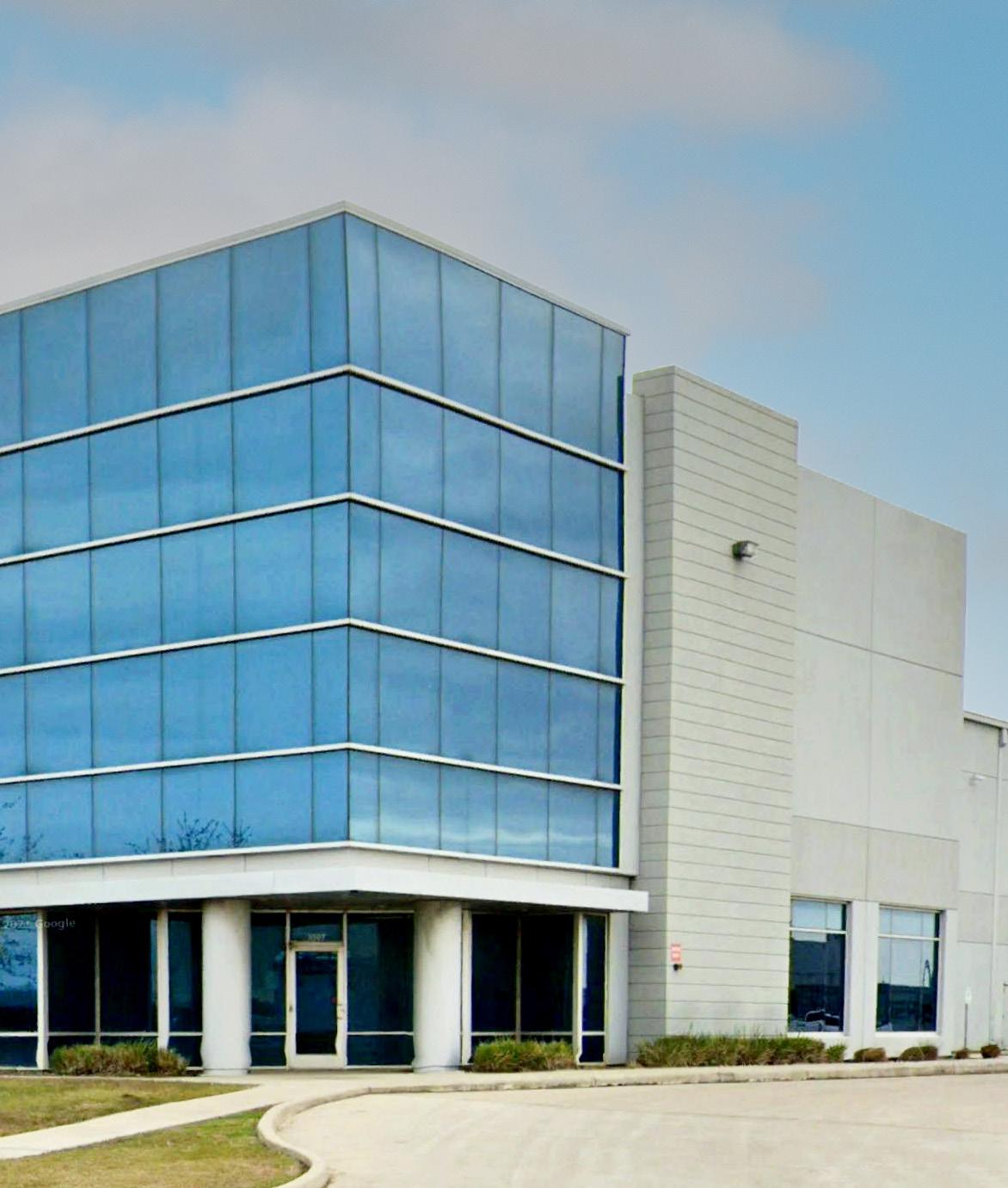
Our experts have the creativity and know-how to tackle your toughest supply chain challenges, continuously giving you a competitive edge to realize your success.
PUBLISHER
Mark Menzies menzies@rejournals.com 312.933.8559
MANAGING EDITOR Dan Rafter drafter@rejournals.com
VICE PRESIDENT OF SALES & MW CONFERENCE SERIES MANAGER Ernie Abood eabood@rejournals.com
VICE PRESIDENT OF SALES Frank E. Biondo Frank.biondo@rejournals.com
CLASSIFIED DIRECTOR
Susan Mickey smickey@rejournals.com
Chicago Industrial Properties® (ISSN 1546-377X) is published bi-monthly for $59 per year by Real Estate Publishing Corporation, 7767 Elm Creek Boulevard, Suite 210, Maple Grove, MN 55369. Contact the subscription department at 312.933.8559 to subscribe. © 2025 by Real Estate Publishing Corporation. All rights reserved. No part of this publication can be reproduced or transmitted in any form or by any means, electronic or mechanical including photocopying, recording or by any information storage or retrieval system.
Dan Barrins Associated Bank
Ron Behm Colliers International
Susan Bergdoll CRG
Corey Chase Newmark
Dan Fogarty Stotan Industrial
Barry Missner The Missner Group
Adam Moore
First Industrial Realty Trust Inc.
Joe Pomerenke
Arco/Murray National Construction Company, Inc
Adam Roth NAI Hiffman
Mike Yungerman Opus Group
1
Disciplined by design: How Chicago industrial developers are navigating a cautious market Chicago’s industrial construction sector is slowing, but that’s not necessarily bad news. Developers who once raced to deliver speculative projects are now weighing each move carefully, balancing financing hurdles with the evolving demands of tenants. The result is a more disciplined cycle that could strengthen the market’s long-term resilience.
4
Distribution centers as the new battleground: Chicago developers sharpen focus on logistics hubs Chicago’s industrial market is no stranger to cycles, but the current one has a defining feature: distribution centers have become the market’s battleground.
8
Holding steady, moving forward: Chicago’s industrial market builds momentum Chicago’s industrial market is entering a new phase of momentum, largely because it never tipped into overbuilding during the post-pandemic boom. While other metros wrestle with excess supply, Chicago’s restraint has left it with steady leasing demand, low vacancy and enough rent growth to keep investors engaged.
12
Surging demand for neocloud solutions? It’s happening now, and it’s big news for data centers An insatiable appetite for artificial intelligence by consumers across the globe and a limited supply from traditional providers is fueling a surge in demand for neocloud solutions.
13
Industrial absorption numbers take a dip Economic uncertainty caused by shifting tariff policies and persistently high interest rates have taken their toll on industrial real estate activity, according to the latest report from the NAIOP Research Foundation.
14
COMMERCIAL SERVICES: COMMERCIAL LENDERS/CONSTRUCTION COMPANIES/GENERAL CONTRACTORS/ ECONOMIC DEVELOPMENT CORPORATIONS/RE LAW FIRMS

By Brandi Smith
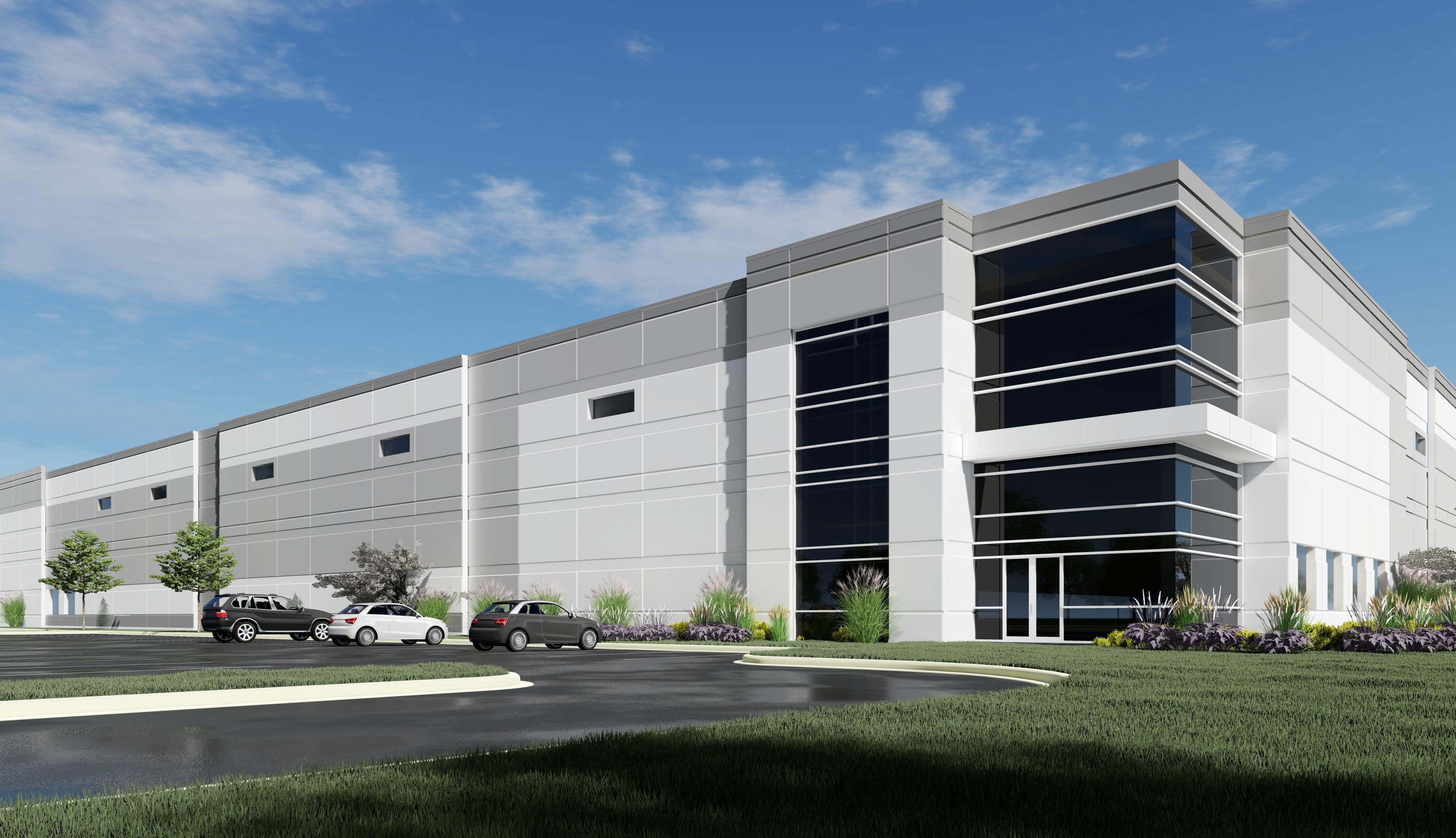
Chicago’s industrial market is no stranger to cycles, but the current one has a defining feature: distribution centers have become the market’s battleground. As construction volumes ease and financing tightens, developers are homing in on the product type that remains most resilient — logistics hubs that tie tenants directly to highways, airports and dense population clusters.
The result is not a slowdown so much as a recalibration. According to NAI Hiffman’s Q2 2025 Construction Report, speculative projects now make up nearly 70% of new construction in the metro, a dramatic shift from the pandemic era when build-to-suit dominated. Developers are wagering that distribution centers in proven submarkets can draw tenants even without pre-leasing commitments.
That confidence is not unfounded. While overall absorption has slowed, demand for strategically located space has persisted. Infill parcels and corridors around O’Hare and I-55 remain magnets for logistics users. Smaller, midsized facilities are also outperforming, catering to regional distributors and third-party logistics firms that need space fast.
Hiffman’s Industrial Market Report underscored the point: leasing velocity in sub-200,000-square-foot buildings is holding up better than in the bulk sector. Vacancy across the metro stands near 6%, well below national averages, and distribution centers continue to anchor much of the activity.
Examples from active developers show how these trends are translating into deals.
CenterPoint Properties recently leased a newly constructed distribution cen-
ter to a Chicagoland-based third-party logistics provider. The lease highlights one of the cycle’s defining themes: logistics firms are still expanding, but they are choosier than before. The fact that the project was delivered speculatively and leased quickly shows that tenant appetite remains intact in the right locations.
“We were confident in the functionality, location and aesthetics of this building,” said Brian McKiernan, CenterPoint’s Senior Vice President of Development for the Central Region. “We set a high bar and challenged our team as well as our construction and brokerage partners and they exceeded expectations on the CIC’s flagship development and lease-up.”
Logistics Property Company (LPC) has doubled down on the airport-adjacent strategy. In March, it announced the acquisition of a development site near
O’Hare International Airport, already one of the most competitive submarkets in the country.
“We are excited to break ground on our newest development in the O’Hare market,” said Aaron Martell, LPC’s Executive Vice President for the Central Region. “It’s a great location that will be very attractive to users in the market.”
By June, LogiPropCo had closed on six land deals totaling nearly 2.5 million square feet of planned distribution center development nationwide. The company’s continued investment in logistics hubs across the country highlights how the region fits within a larger national growth strategy.
ML Realty Partners has demonstrated another angle on the DC story: broadbased absorption across suburban corridors. Over the past year, the firm
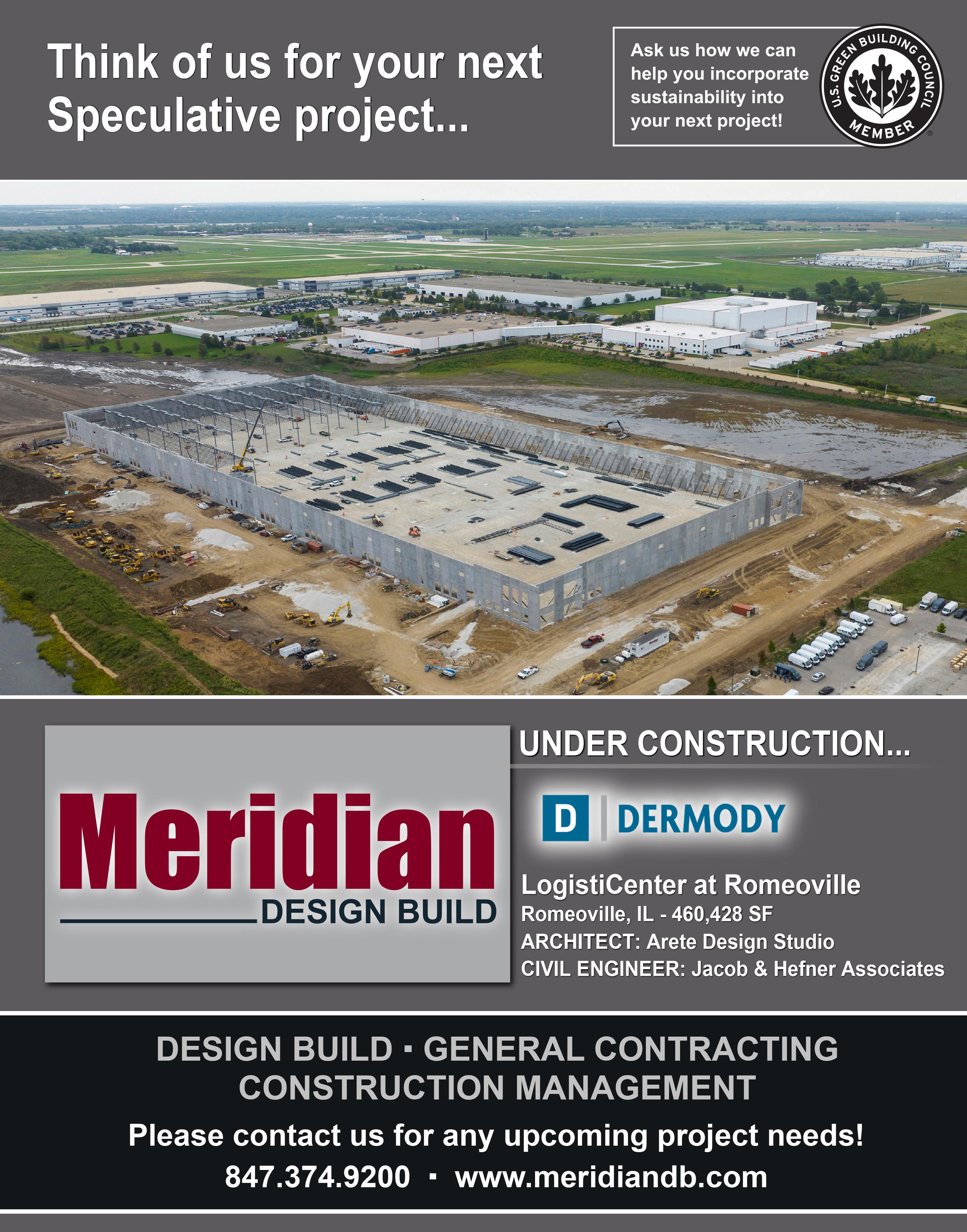

completed nearly 685,000 square feet of leases across the metro.
“These transactions underscore ML Realty Partners’ continued commitment to providing functional, long-term industrial solutions to a diverse range of companies and industries,” said Matt Novak, Leasing Director of ML Realty Partners.
Among its deals was a 132,892-squarefoot distribution center, delivered speculatively and quickly secured by a tenant. For ML, midsized facilities in accessible submarkets have provided a consistent stream of leasing, underscoring that tenant needs extend beyond the largest bulk facilities.
Together, these examples reveal a clear pattern. Distribution centers are where developers are concentrating their risk. With financing harder to secure and capital partners more selective, the projects that move forward tend to be those tied to logistics demand.
Amazon’s reentry into the market is also shaping the competitive landscape. After pulling back in 2022 and 2023, the company is again active in leasing, which Hiffman labeled an “industrial comeback.” For developers, even modest moves by Amazon ripple outward, influencing both speculative planning and tenant confidence. Distribution centers remain the backbone of e-commerce logistics, and Amazon’s activity
"We are excited to break ground
on our newest development in the O’Hare market. It’s a great location that will be very attractive to users in the market."
serves as a barometer for the sector’s strength.
The geography of demand is telling. The O’Hare submarket is the most obvious battleground, with land scarcity pushing values higher and fueling competition among developers. The I-55 corridor continues to attract big-box users who value highway connectivity, while infill sites closer to the city are being snapped up for last-mile distribution. The Southwest suburbs, long a secondary option, are also gaining ground as developers
chase sites with both available land and strong tenant pipelines.
For tenants, the environment has produced more optionality in some size ranges. Speculative distribution centers allow occupiers to move in faster than build-to-suit timelines would allow, which is particularly attractive to 3PLs under pressure to expand quickly for client contracts. For developers, however, the calculus is unforgiving. Without the tailwind of cheap capital, projects must line up on fundamentals — trans-
portation access, power availability and flexible configurations — to earn financing.
That selectivity is forcing precision in design. Developers are not just building boxes; they are tailoring distribution centers with higher clear heights, more trailer parking and expansion capacity. Even power availability is a differentiator, especially as logistics and light manufacturing tenants demand greater automation capacity.
The long-term view is that distribution centers will remain the heartbeat of Chicago’s industrial market. While manufacturing projects, cold storage and smaller infill assets all have their niches, the consistent absorption of logistics hubs gives developers reason to keep sharpening their focus. What changes is not whether DCs are built, but how carefully each new project is chosen and executed.
If the last cycle was about volume, this one is about positioning. Developers like CenterPoint, LPC and ML Realty are demonstrating that the projects which move forward are those most closely aligned with logistics infrastructure and tenant certainty. For a metro as vast and interconnected as Chicago, that means distribution centers have become the sector’s most contested ground — and the clearest signal of how industrial real estate will evolve in the years ahead.
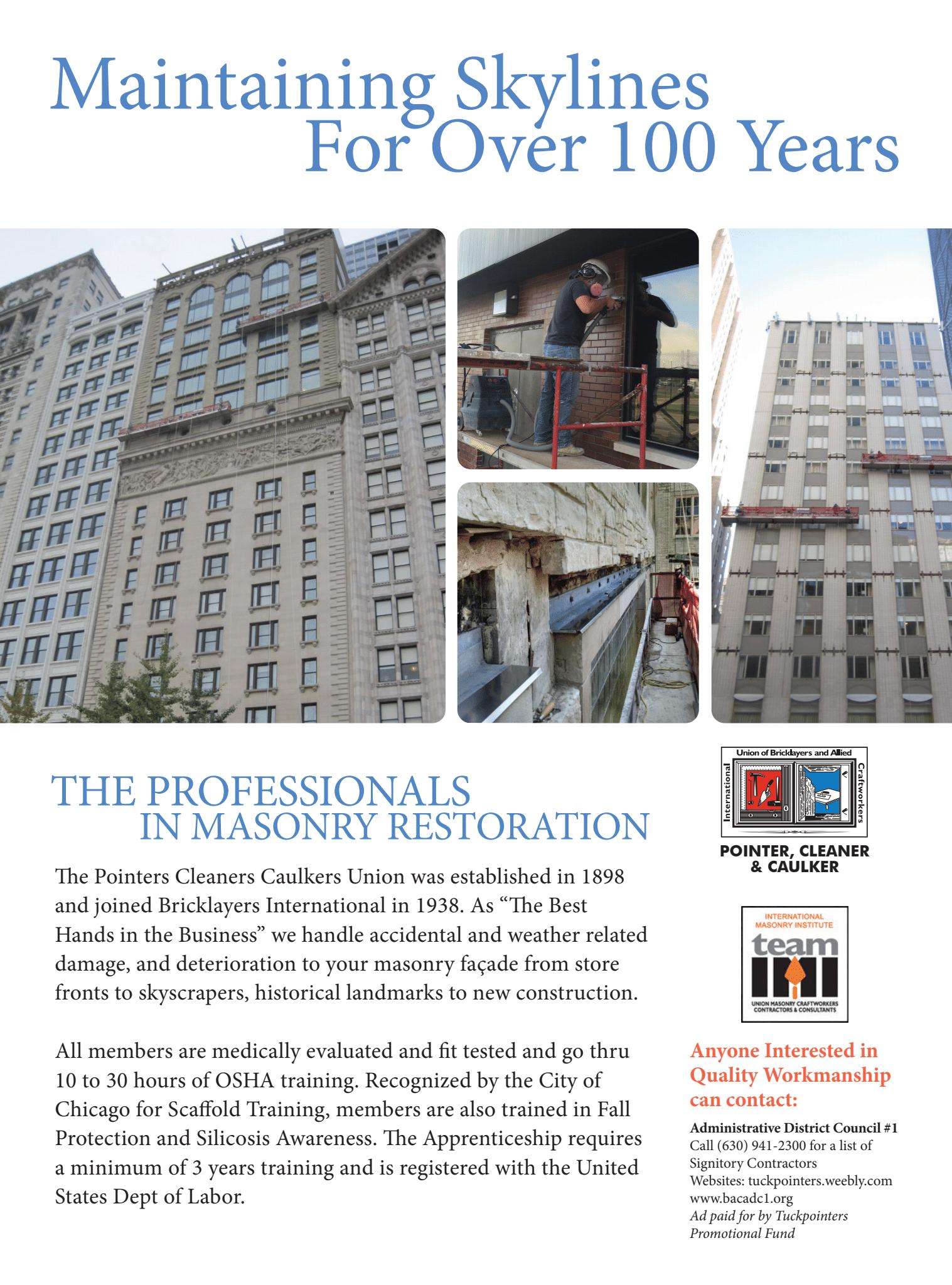
By Brandi Smith

Chicago’s industrial market is entering a new phase of momentum, largely because it never tipped into overbuilding during the post-pandemic boom. While other metros wrestle with excess supply, Chicago’s restraint has left it with steady leasing demand, low vacancy and enough rent growth to keep investors engaged.
“I would say the industrial investment sales market across metropolitan Chicago is as good as it's been in the last few years, certainly since the Fed started raising interest rates in the spring of 2022,” said Mike Tenteris, vice chair of Cushman & Wakefield’s Industrial Advisory Group.
That backdrop is translating into renewed deal activity. Avison Young’s Erik Foster described Chicago’s investment sales market as “surging,” pointing to the 1.4 million square feet of speculative projects that broke ground in the second quarter as a sign of investor confi-
dence ahead of a potentially breakout year in 2026.
“As interest rates trend lower, we anticipate greater momentum and investor confidence in the market,” Foster said.
“We remain optimistic about the remainder of the year and beyond, driven by expectations of improving deal volume.”
The numbers back that up. Overall vacancy was recorded at 6.3% in Q2 2025 according to Avison Young, well below the national average of 9.3%. Leasing activity reached 25.2 million square feet in the first half of the year, only slightly behind the five-year average. In June alone, tenants signed 5.1 million square feet, underscoring resilience despite tariff pressures and broader economic uncertainty.
“The fact that we didn’t get overbuilt and we're still leasing space, current vacancy rates remain low, and in certain size
ranges we're still seeing rent growth,” Tenteris said. “This certainly resonates well with investors, particularly when you look at the larger landscape of the Midwest.”
Much of the action is concentrated in infill properties and smaller spaces. Tenteris noted that sub-150,000-squarefoot buildings are outperforming the broader market on occupancy and rent growth particularly in DuPage and Will counties. These properties can draw as many as 10 to 15 bids, reflecting how deeply investors are pursuing value-add strategies. Foster said new and big-box assets have not been as actively marketed, keeping attention focused on these opportunities.
“Much of the investor capital in the market right now is primarily focused on a value-add strategy,” Tenteris said. “One way to get there is by buying something where you think rents are going to grow
and can sell at a cap rate at or below today's spot cap rates.”
Recent transactions illustrate the trend. NorthPoint Development paid more than $87 million in June for two buildings in Elgin as part of a larger portfolio deal while Ares Industrial Management acquired twin properties in North Aurora totaling more than 429,000 square feet for nearly $58 million. Both deals traded near or above $100 per square foot, reflecting healthy pricing and steady buyer appetite.
That competition is supported by a healthier financing environment. Banks have returned to the lending market, joining life companies and CMBS providers, which has created more flexibility and larger potential deal sizes.
“Debt is driving deal volume right now,” Tenteris said.
Falling interest rates are adding to investor confidence and paving the way for more activity through the rest of the year.
“The market has demonstrated resilience throughout the downturn and we believe that Chicago is well-positioned to benefit from renewed investment activity,” Foster said.
Investors are also paying closer attention to fundamentals at the property level. Tenant credit, which had faded as a concern during the post-pandemic leasing surge, is once again under scrutiny. Lease terms are also being weighed carefully. While some investors prefer the security of three-to-fiveyear commitments, others are betting that demand will rebound and are comfortable with shorter durations.
“Many investors think that the leasing environment will improve in the near future, which is why they are actively pursuing value-add opportunities and properties with shorter lease terms,” Foster said.
Chicago’s construction pipeline tells a similar story of balance. Developers broke ground on seven speculative projects in Q2 totaling 1.4 million square feet even as overall construc-

tion volume is down nearly 24% from last year. The pipeline remains strong at 9.5 million square feet with more than half already committed through build-to-suit deals. Major projects include Walmart’s 1.25 million-squarefoot distribution center in Belvidere and CJ Logistics’ 1.1 million-squarefoot facility in Elwood.
“Selective speculative development in sub-markets with strong fundamentals present another avenue for growth

– particularly when assets align with sub-market demand,” Foster said.
Challenges remain. Tariff uncertainty is delaying some decision-making and national and multinational tenants are taking longer to finalize moves. Even so, space is being absorbed as companies run out of time to wait. Against that backdrop, recently leased speculative buildings at market rents may present one of the market’s most overlooked opportunities.
“The biggest opportunity I see right now is in recently leased spec buildings at market rents with lease durations of five to 10 years,” Tenteris said. “With the yield premium that investors get by coming to the Midwest — based on the performance of the underlying fundamentals — it tells me it’s a pretty safe bet to be buying recently built, occupied buildings at cap rates that are 50 to 100 basis points higher than other gateways.”
Foster pointed to another opening in assets that owners had previously held back during the downturn.
“Significant opportunities exist for owners to selectively sell core assets that were previously held back from the market due to limited buyer interest,” Foster said. “With investor sentiment improving, these assets can now be strategically brought to the market.”
With fundamentals intact, financing loosening and confidence rising, Chicago’s industrial sector is positioned to draw both value-add and core investors in the months ahead. After years of resilience, the city may be approaching its long-awaited breakout moment.

“Infill areas in and around Chicago, along with West and Southwest suburbs, are seeing the most activity,” Ryor said. “The I-55 and I-80 corridors continue to be leaders due to the availability of developable land for industrial based buildings.”
Financing is now the central constraint on new construction. Deals are still getting done, but capital partners are applying stricter underwriting standards and choosing carefully.
“Financing for new deals is getting better but securing both debt and equity remains a challenge,” said Steve Schnur, chief operating officer at CRG. “Capital partners have plenty of opportunities and can be more selective on what deals they fund.”
That selectivity is reshaping the scale of projects that move forward. Smaller buildings are easier to finance, require fewer approvals and fit neatly into infill locations. Industrial developers are also competing with acquisitions and distressed opportunities in other asset
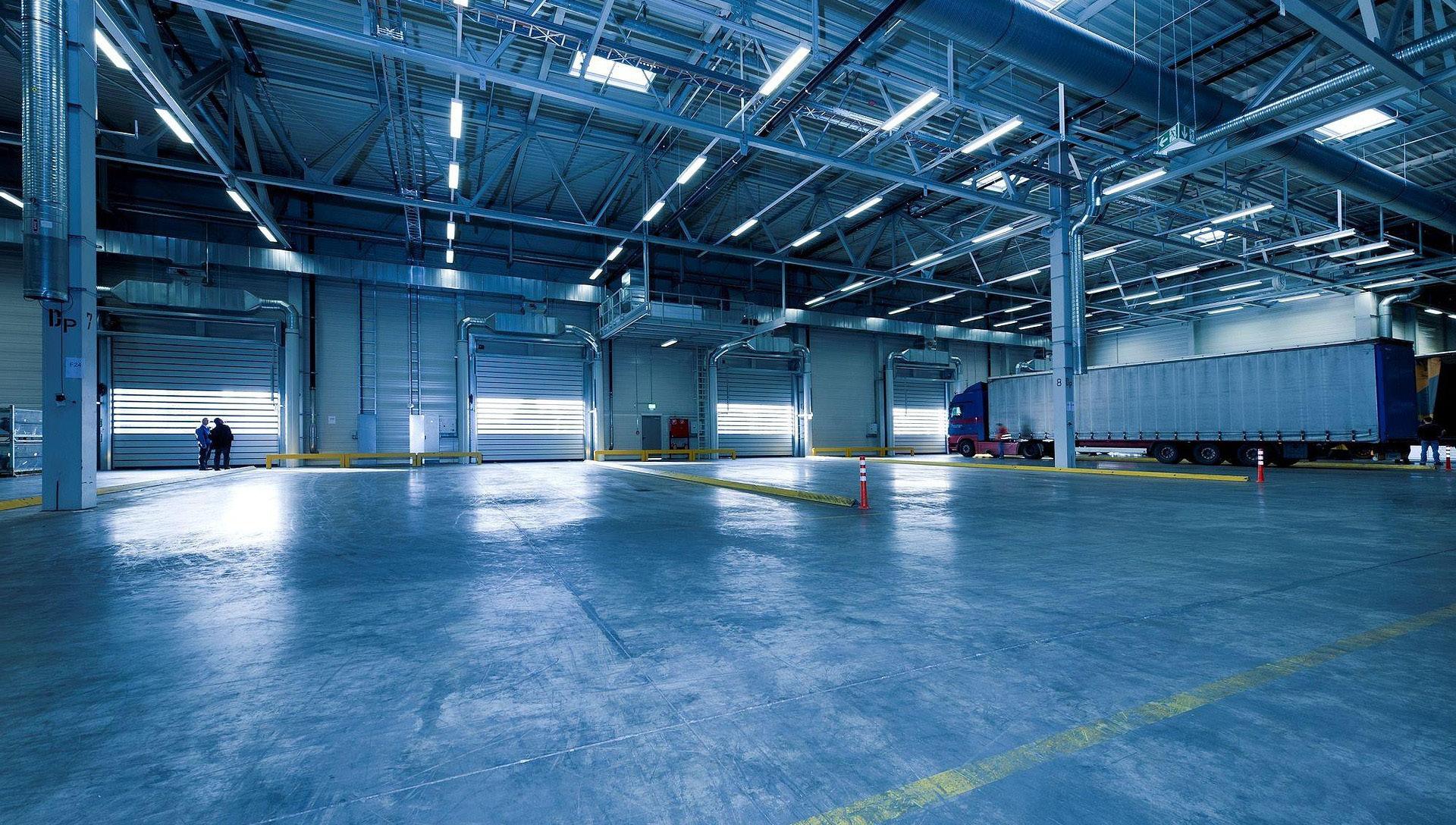

results in costs, rents, cap rates being further challenged and scrutinized with higher levels of conservatism,” Schnur said. “Some equity and debt groups appear to be more interested in smaller projects that require less levels of approval.”
For a fully integrated builder like Clayco, which operates through subsidiaries including design-build firm Lamar Johnson Collaborative and developer CRG, this environment favors experience, scale and efficiency. Firms that can streamline costs and deliver quickly are more likely to push projects across the finish line.
At the same time, tenants are exerting more influence over how projects are designed and where they are built. Flexibility has emerged as the defining requirement, shaping decisions around power, parking and expansion capacity.
“Tenants are prioritizing flexibility,” Ryor said. “Key features include expansion ability, power availability to the building site, multiple entrance access points and trailer parking or ability to add more.”
Manufacturing users in particular are making high-capacity power a non-negotiable. As automation and advanced production processes reshape the industrial landscape, developers who

can deliver reliable power access hold a clear advantage. This has eliminated some otherwise attractive sites and reinforced the selective nature of today’s cycle. Those constraints are shaping not only which projects move forward, but also how developers design buildings to ensure they can adapt as tenant requirements evolve.
While the slowdown has raised concerns in some corners, Clayco leadership views

restraint as a stabilizing force. Chicago’s market avoided the kind of overbuilding that plagued other metros during the post-pandemic boom, and that discipline is now a competitive strength.
“There are definitely opportunities,” Ryor said. “Development in Chicago has shown quite a bit of reserve over the past couple of years which has helped avoid oversupply.”
That restraint is paired with enduring fundamentals that make Chicago one of the nation’s most important logistics hubs. Its combination of airports, rail networks, interstate highways, utilities, and skilled labor provides a foundation few markets can match.
“Fortunately, greater Chicagoland has attractive amenities such as multiple airports, a network of interstates and railroads, land, ample resources such as water and power, and an educated and strong workforce,” Ryor said. “These assets position Chicago to continue to be a big industrial market with opportunities for years to come.”
The Chicago industrial pipeline may not be surging, but it is far from stagnant. Developers are responding to tenant needs, capital constraints, and vacancy levels with precision rather than speed. That selectivity could prove to be the market’s greatest strength in the years ahead.
For Clayco, which has delivered major industrial, manufacturing and logistics projects nationwide, Chicago’s current cycle is less about volume and more about positioning. Projects that do move forward are designed to last, aligning with tenant requirements and market fundamentals that have kept the region competitive for decades.



By JLL

An insatiable appetite for artificial intelligence by consumers across the globe and a limited supply from traditional providers is fueling a surge in demand for neocloud solutions.
Neoclouds are defined as specialized cloud providers offering flexible and on-demand access to graphics processing units (GPUs) critical for AI, blockchain, gaming and scientific workloads. Neoclouds are also known as GPU-as-a-service (GPUaaS) by merit of their ability to allow customers to select tailored solutions and lower costs than hyperscalers through direct hardware partnerships and focused service offerings.
The rise of neocloud infrastructure, which provides a clear alternative to
hyperscalers, will continue, according to JLL, as customers demand flexibility, scalability and cost advantages for specialized AI infrastructure that some traditional data centers cannot adequately support.
JLL analysis shows that the global neocloud segment will potentially expand by a compound annual growth rate of 82% between 2021-2025, as competition for AI capacity intensifies and access to GPU resources surges.
“Demand for AI infrastructure is growing at an exceptional pace, and the global data center market has become capacity constrained. Neoclouds have developed an advantage over traditional cloud providers by moving faster and pricing lower with flexible terms. As AI shows no signs of slowing, its success
will rely on accessibility to GPU infrastructure, which neoclouds specifically cater to,” said Andrew Batson, JLL Head of Data Center Research, AMER.
The appeal for neocloud infrastructure globally is multi-faceted and will remain front-of-mind as AI usage accelerates further. According to JLL, a major advantage for neoclouds is their ability to quickly deploy high-density GPU infrastructure versus multi-year builds common in hyperscale data centers.
However, the rise of neocloud infrastructure is not expected by JLL to be a detriment of hyperscalers. Given the specialization in AI-workloads that characterize neoclouds, hyperscalers will be better equipped to provide the diverse range of computing services preferred by many global enterprises.
From an investment standpoint, the risk profile of neoclouds differs from hyperscalers. Neoclouds are characterised by higher capital requirements and sometimes shorter lease terms, creating more immediate risks. However, risks are balanced with the rental rate premium associated with neoclouds versus traditional data center tenants.
“Funding will be a major factor to translate the potential of neoclouds into a reality capable of handling the AI load. Building GPU infrastructure is capital-heavy, and investors should have a clear vision for delivering a viable business model and support from key clients before undertaking an entry into the neocloud space”, said Muhd Syafiq, Director of Data Center Research, Asia Pacific, JLL.
By NAIOP

Economic uncertainty caused by shifting tariff policies and persistently high interest rates have taken their toll on industrial real estate activity, according to the latest report from the NAIOP Research Foundation.
NAIOP reported that only 27 million square feet of industrial space were absorbed in the first half of 2025 and demand shrinking by 11.3 million square feet in the second quarter –the first quarterly decline since 2010.
According to the NAIOP Research Foundation’s latest Industrial Space Demand Forecast, net absorption is expected to be nearly flat over the second half of 2025, but demand will begin to grow again in 2026.
Demand for industrial space is expected to recover somewhat after occupiers have time to adjust to a new tariff regime, according to the report. But higher tariffs and slowing employment growth will likely result in slower demand growth than that experienced from 2020 to 2022 or in the six years that preceded the pandemic.
Absorption is expected to rebound beginning in the second quarter of 2026, with full-year absorption totaling 119.3 million square feet. Another 109.7 million square feet of absorption is expected in the first half of 2027.
Demand for industrial real estate has been influenced by several factors, according to the report:
• Changes in U.S. trade policy, which could alter the strategies of occupiers that import raw, intermediate and finished goods, as well as those that export products abroad.
• Slow employment growth from May through July that suggests a broader slowdown in the economy is underway.
• Higher interest rates in recent years. Many expect the Federal Reserve to cut the federal funds rate by the end of 2025 if the employment market remains soft. The report notes that “falling rates and greater clarity on tariffs could reduce uncertainty and spur greater demand for industrial space, leading to a return to positive absorption in early 2026.”
“While the latest forecast reflects the impact of tariffs and a cooling economy, history has shown that industrial real estate remains a resilient sector,” said Marc Selvitelli, president and chief executive officer of NAIOP.
“We anticipate a measured recovery in demand beginning in 2026 as markets adjust and fundamentals stabilize, positioning the sector for a return to stable growth.”
The semi-annual report is authored by Hany Guirguis, Ph.D., dean, O’Malley School of Business and professor, economics and finance, Manhattan College;
"While the latest forecast reflects the impact of tariffs and a cooling economy, history has shown that industrial real estate remains a resilient sector."
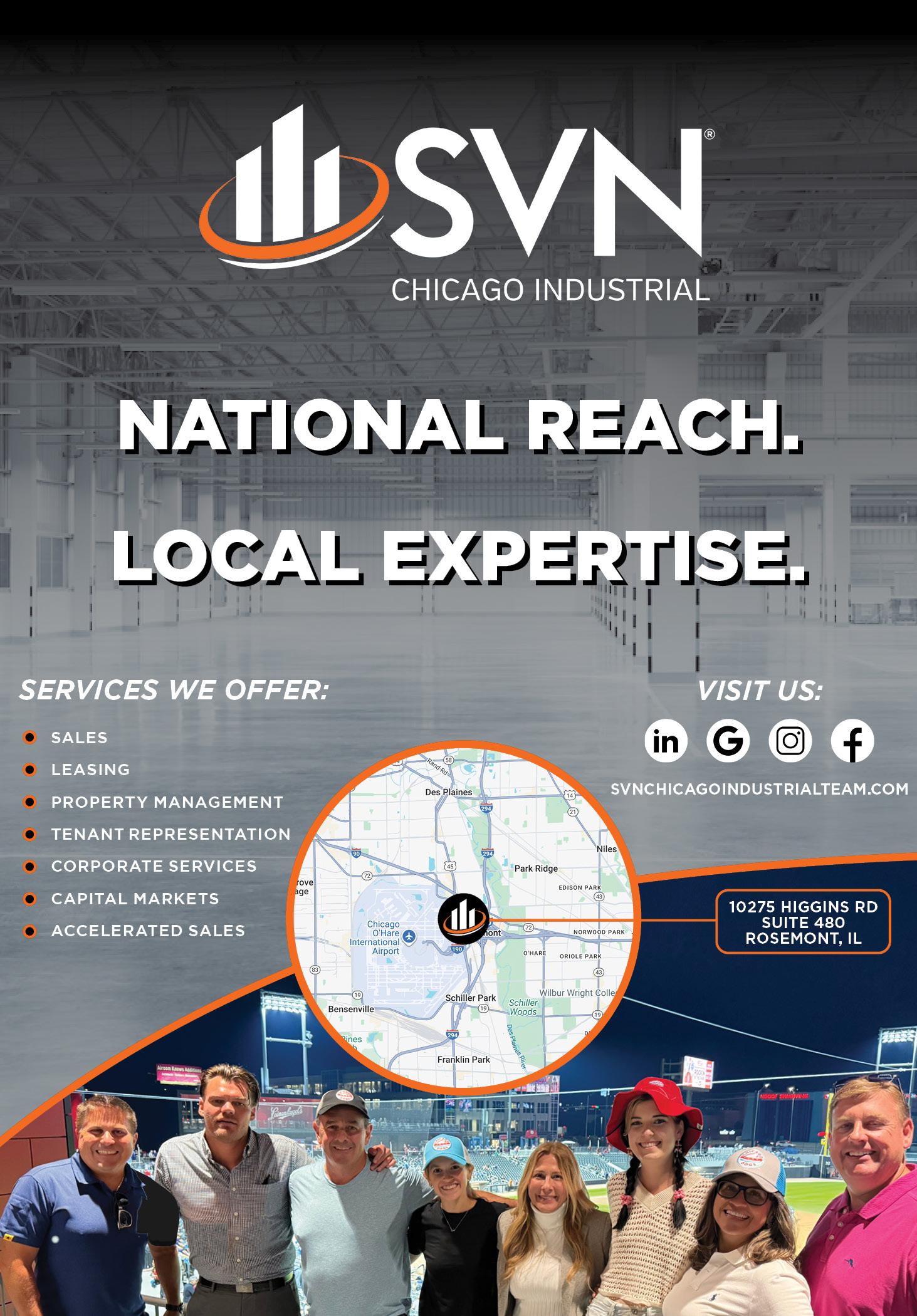

MERIDIAN DESIGN BUILD
9550 W. Higgins Road, Suite 400 Rosemont, IL 60018
P: 847.374.9200 • F: 847.374.9222
Website: meridiandb.com
Key Contact: Paul Chuma, President; Howard Green, Executive Vice President

Services Provided: Meridian Design Build provides construction and design/ build construction services on a national basis with a primary focus on industrial, office, medical office, retail and food and beverage work. Company Description: With a team of in-house professional project managers, Meridian has extensive experience coordinating the design and construction of new buildings, tenant improvements, and additions/renovations from 15,000 square feet to 1,000,000+ square feet. Meridian Design Build has been a Member of the U.S. Green Building Council since 2007.
Notable/Recent Projects: Venture Park 47, Huntley, IL - 729,800 sf speculative industrial facility for Venture One Real Estate. Lion Electric, Joliet, IL - 928,500 sf electric bus / medium duty truck assembly plant for Clarius Partners. Greenwood Truck Terminal, Greenwood, IN - 125 door truck terminal on 43 acres for Scannell Properties.
PRINCIPLE CONSTRUCTION CORP.
9450 West Bryn Mawr Ave., Suite 120 Rosemont, IL 60018
P: 847.615.1515 | F: 847.615.1598
Website: pccdb.com

Key Contacts: Mark L Augustyn, COO, maugustyn@pccdb.com, James A. Brucato, President, jbrucato@pccdb.com
Services Provided: Since 1999, Principle Construction Corp. has been a leading design-build general contractor serving the industrial markets of Chicago Metro, Southern Wisconsin, and Northwest Indiana. We specialize in designing and constructing exacting solutions for our clients, including:
• Built-to-Suit Facilities • Speculative Facilities • Warehouse and Distribution Centers • Logistics and Cross-Dock Facilities • Industrial Outdoor Storage • Industrial and Manufacturing Plant • Tenant Improvements • Expansions and Additions • Food Processing Facilities • Specialty Projects
Recently Completed Projects include:
• 8,205 SF animal shelter for Heartland Animal Shelter, at 586 Palwaukee Dr., in Wheeling, IL.
• 12,560 SF showroom and outdoor pool park for Doheny Enterprises, at 5307 Green Bay Rd., in Kenosha, WI
• Phase 1 renovation project for SMW Autoblok, at 285 Egidi Dr., Wheeling, IL
VICTOR CONSTRUCTION
2000 Center Dr., Suite East C219 Hoffman Estates, IL 60192
P: 847.392.6900
Website: victorconstruction.com
Key Contact: Zak Schuttler, President, ZakS@victorconstruction.com
Services Provided: Victor Construction Co., Inc. manages projects from ground-up site developments to interior buildouts, specializing in retail, industrial, and commercial markets.

Company Profile: Established in 1954, Victor Construction Co., Inc. is a third generation general contractor that specializes in commercial, industrial, and retail construction. Victor Construction is known as one of the most efficient and dependable general contractors in the Chicago metropolitan area and has earned the reputation due to meticulous project management, cost-effectiveness, budget awareness, and prime first-rate workmanship. Commitment to the clients’ goals is what keeps satisfied customers returning to Victor Construction for all of their construction needs—We Build for Your Success!
Notable/Recent Projects: Owens + Minor Distribution – 600K SqFt distribution facility that involved a full LED lighting upgrade, new HVLS fans, 200K SqFt section that required new cooling for medical distribution, an office renovation of 20K SqFt, and a new exterior employee pavilion.
VILLAGE OF HOMER GLEN ECONOMIC DEVELOPMENT
14240 W. 151st Street
Homer Glen, IL 60491
P: 708.301.0632
Website: HomerGlenIL.org
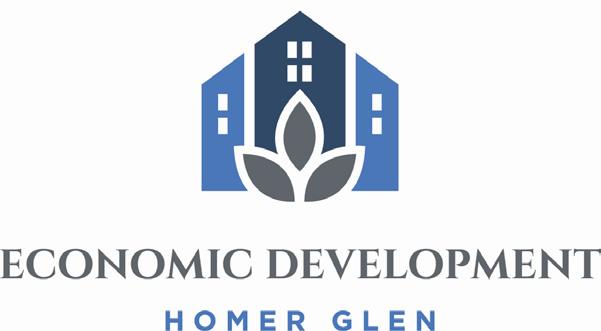
Key Contact: Janie Patch, Economic Development Director, jpatch@homerglenil.org
Services: Resource center for brokers, developers, site selectors and businesses providing space and property inventory, trade area demographics, site selection assistance, custom tours, coordination through entitlement process, business opening process guidance and retention services. Demographic Info: Strategic Will County location 25 miles southwest of Chicago with two I-355 interchanges between I-55 and I-80. Average household income of $154,800. Trade area population of 83,000. Prime commercial corridors include Bell Road, 143rd Street and 159th Street (State Route 7). 159th Street is improved with 4 lanes and access to Lake Michigan water and sanitary sewer.
Recent CRE Activity: The Villas of Old Oak (46 ranch duplexes) completing full build out. New food specialty and restaurant openings include South Viet, OneZo Boba Tea, Sultan Sweets and Cervantino’s. Restaurant with drive-thru position available at Homer Glen Bell Plaza with Pet Supplies Plus, Dollar Tree and Taco Bell, SWC 143rd/Bell.
Two Cadence Park Plaza
Michigan City, IN 46360
P: 219.873.1211
Website: www.edcmc.com
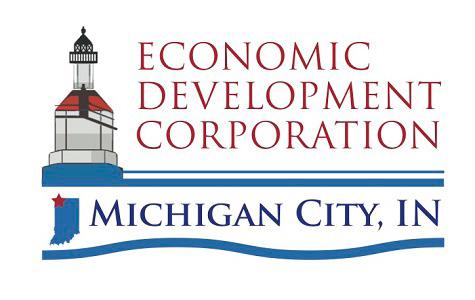
Key Contacts: Clarence Hulse, Executive Director, chulse@edcmc.com Karaline Cartagena Edwards, Economic Development Manager, kcedwards@edcmc.com
Services/Demographic Info: Up-to-date inventory of commercial buildings, site selection and orientation tours
Incentives: Tax-Increment Financing, Façade Improvement Grants, Property Tax Abatements, Enterprise Zones, Job Training Programs
Recent CRE Activity: Double Track Northwest Indiana: $1.6 Billion development reducing train travel to Chicago to 60 minutes; The Franklin at 11th St. Station: $100 Million Development with Residential & Retail Space; “You are Beautiful”/ SoLa: $311 Million Mixed-Use Multi-Family Development with 235 boutique hotel rooms & 174 Luxury Condos; Burn ‘Em Brewing: $3 Million Expansion project with 30 new jobs.
DEIGAN & ASSOCIATES, PLLC 28835 N. Herky Drive Lake Bluff, IL 60044
P: 847.682.7381

Website: www.deiganassociates.com
Key Contact: Michele Brady, Director Business Development & Real Estate Services, mbrady@deiganassociates.com
Services Provided: The Deigan Group provides client responsive, results oriented environmental consulting and remediation services, with a focus in land-based work, including Brownfield Redevelopment, Power Plant Decommissioning/Redevelopment, Strategic Environmental Planning, Property Assessments and Site Remediation, Compliance/Permitting, Employee Exposure Testing/Safety Monitoring
Asbestos Surveys/Mold/Indoor Air Quality, Waste Minimization/ Recycling/ Sustainability Plans, Successful Grant Writing.
Company Profile: A full-service environmental consulting organization specializing in defining environmental business risk and removing environmental uncertainties for property development sites. Our wide range of experience within the environmental industry helps us provide realistic cost-saving strategies for our clients with the goal of reducing their overall environmental liability and obstacles to redevelopment.
MARQUETTE BANK
10000 W. 151st Street
Orland Park, IL 60462
P: 708-364-9131
Website: emarquettebank.com
Key Contact: Gene Malfeo, Senior Vice President, gmalfeo@emarquettebank.com
Services Provided: Full line of Commercial, Business and Real Estate loans customized to your individual needs including: commercial and residential construction loans, commercial mortgages, equipment loans and working capital lines of credit.
Company Profile: Marquette Bank started in Chicagoland in 1945 and is still locally-owned/operated. Expect quick decisions, competitive rates, easy application and personal service. Personal/business banking and lending, home mortgages, land trust services, estate planning, insurance services, wealth management and multifamily lending.
REINHART BOERNER VAN DEUREN S.C.
1000 N Water Street, Suite 1700 Milwaukee, WI 53202
P: 414.298.1000
Website: reinhartlaw.com

Key Contact: Joseph Shumow, Shareholder, jshumow@reinhartlaw.com
Services Provided: Reinhart is a full-service, business-oriented law firm that delivers innovative, value-added solutions for today’s most important real estate needs, including land use and zoning; tax-incremental financing; tax credits; leasing; construction; and condemnation and eminent domain issues.
Company Profile: With the largest real estate practice in Wisconsin and offices throughout the Midwest and across the country, Reinhart’s attorneys offer clients customized real estate insight rooted in broad knowledge and deep experience to help you capitalize on opportunities no matter where you do business.
PROPERTY TAX
100 N. LaSalle St., 10th Floor Chicago, IL 60602
P: 312.782.8310
Website: sarnoffpropertytax.com

Key Contact: James Sarnoff, jsarnoff@sarnoffpropertytax.com P: 312.448.5337
Services Provided: Since 1986, Sarnoff Property Tax has been a leading and recognized law firm concentrating solely in the field of property taxation. We help client’s secure favorable taxes in Illinois through property tax appeals, incentives and consulting.
Company Profile: Sarnoff Property Tax’s clients include Owners, Developers, Managers, REIT’s, Fortune 500 Companies, Private Equity Firms, etc., in connection with commercial property, high-rise and low-rise apartment buildings, condominium associations and single-family home portfolios
180 North LaSalle Street, Suite 3010 Chicago, IL 60601
P: 312.917.2307 P: 312.917.2312 | F: 312.596.6412
Website: wvproptax.com
Key Contacts: Francis W. O’Malley, Managing Partner fomalley@wvproptax.com; Jessica L. MacLean, Partner jmaclean@wvproptax.com
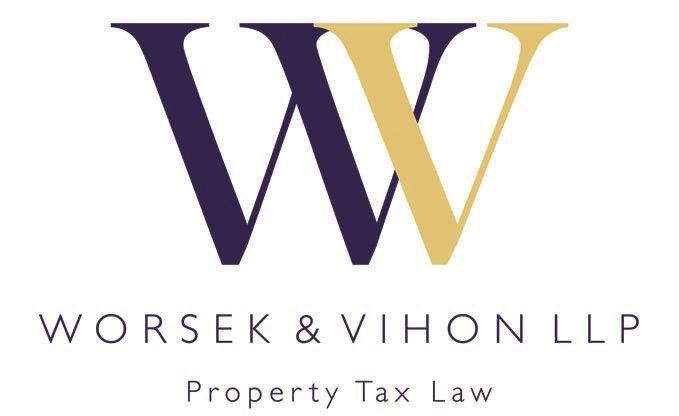
Services Provided: Worsek & Vihon, LLP represents tax payers in Illinois by limiting their property tax liabilities through ad valorem appeals. We have over 40 years of experience and can handle basic to the most complex assessment issues while offering the dependable, personalized attention our clients deserve. We have experience representing owners of all property types. In addition to filing thousands of appeals with the Cook County Assessor, we have been involved in numerous proceedings before various Boards of Review, the Illinois Property Tax Appeal Board, and the Circuit Court of Illinois, and have appeared before the Illinois Appellate and Supreme Courts.
Company Profile: Worsek & Vihon LLP, is a team of experienced attorneys singularly focused on real estate tax law. The firm is dedicated to minimizing property tax liabilities through strategic tax portfolio management, wellresearched, creative appeal preparation and aggressive advocacy.

